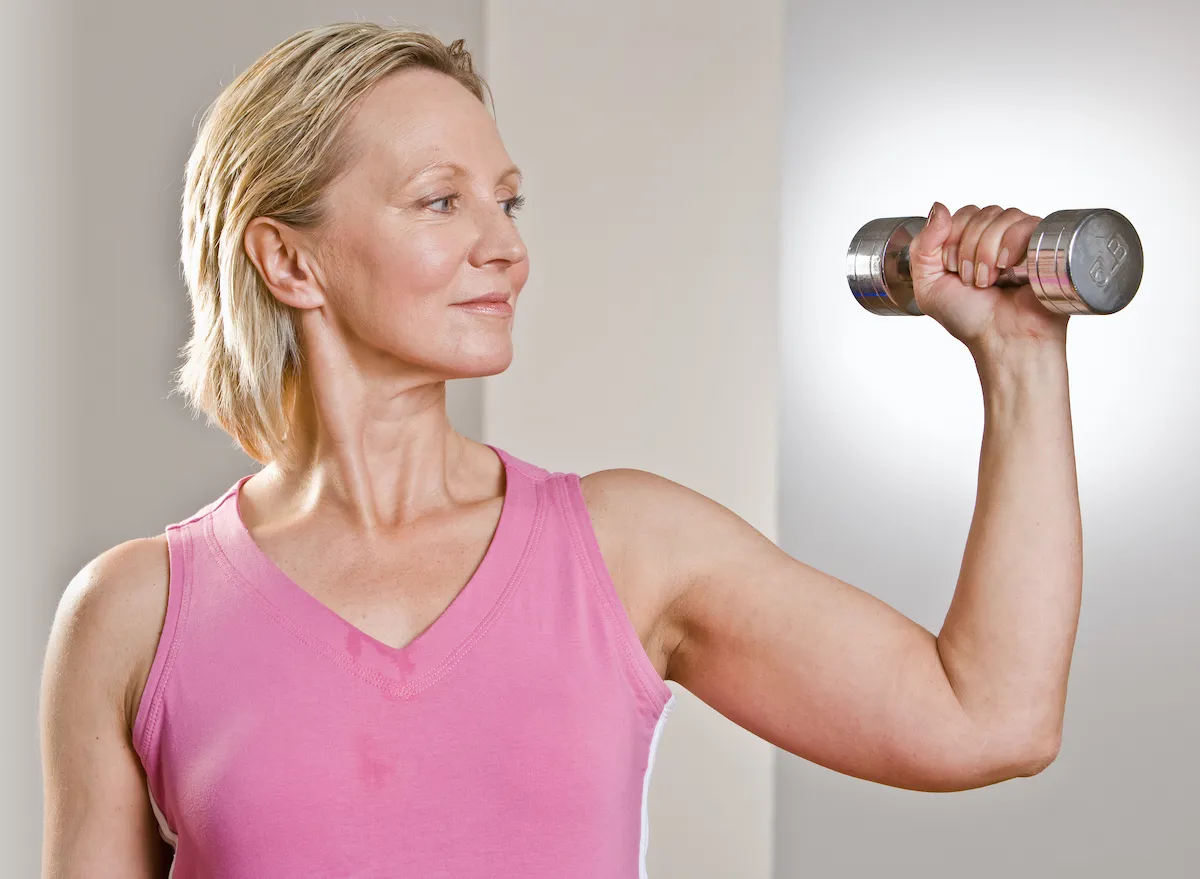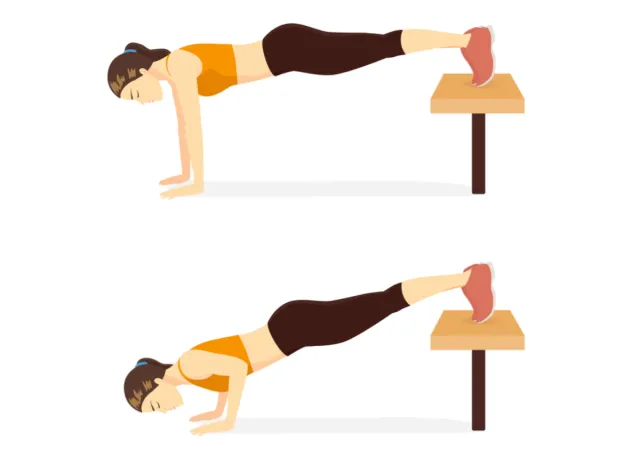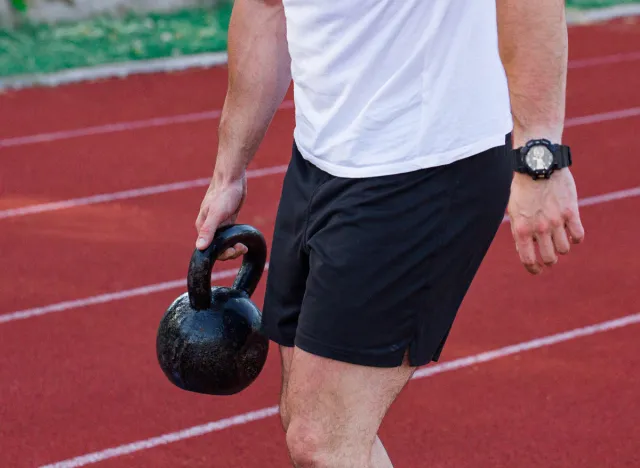5 Strength Exercises That Will Transform Your Middle-Aged Body

One of the best things about strength training is that it’s never too late to start. But while age often comes with wisdom, it also poses physical challenges that can be tough to overcome. Fortunately, we chatted with Jarrod Nobbe, CPT, a certified personal trainer with Garage Gym Reviews, who shares five stellar strength exercises to transform your middle-aged body. You can start incorporating them into your routine today.
Strength exercises are crucial for building muscle and maintaining bone density, which is especially important as we age, according to the National Institute on Aging. Plus, according to research, strength training also improves posture, balance, and overall functionality in everyday life. And the best part? You don’t need fancy equipment or a gym membership to do them.
In addition to its physical benefits, strength training can also have a positive impact on mental health. For example, studies show that resistance training can help alleviate symptoms of anxiety and depression, boost self-esteem, and improve cognitive function in middle-aged individuals.
In this article, we’ll explore five strength exercises perfect for middle-aged folks looking to transform their bodies. We’ll provide step-by-step instructions on how to perform each exercise and explain the benefits of each one and why they’re essential for a healthier, stronger body.
So grab a water bottle and some weights and get ready for five strength exercises to transform your middle-aged body. (When you’re finished, check out how to Fight the Middle-Aged Spread With This Free Weights Workout.)
1. Feet-Elevated Pushups

Pushups are a classic exercise that targets your chest, shoulders, triceps, and core muscles. But by elevating your feet, you can add more resistance and engage your upper body even more.
For feet-elevated pushups, place your feet on a stable surface such as a bench or step and your hands on the ground shoulder-width apart to perform elevated pushups. Next, lower your chest to the ground and push back up, keeping your body straight. Aim for 10 to 12 reps for three sets.
“The elevated pushup allows an increased range of motion for each repetition while challenging your stability and core control. This variation targets the muscles of the chest, front deltoids, and triceps,” says Nobbe. To take this one up a notch, Nobbe suggests using resistance bands, chains, or plates and increasing the intensity by slowing down your tempo and adding pauses.
2. Pendulum Lunges
Lunges are an excellent way to strengthen your legs, glutes, and core muscles. However, the pendulum lunge will challenge your balance and coordination as well.
To perform this dynamic lunge variation, stand with your feet hip-width apart, and take a big step forward with your right foot. Next, swing that right foot back like a “pendulum” to drop down into a reverse lunge. Repeat the pendulum motion on your left side. Complete three sets of 12 to 15 reps.
“A pendulum lunge has efficiency paired with difficulty by challenging both legs as you move from a reverse lunge to a front lunge in one fluid movement,” explains Nobbe. “The pendulum lunge targets the quadriceps, glutes, calves, and hamstrings while improving your single-leg lower-body strength, balance, and coordination.”
3. Chest-Supported Rows
Rows are a crucial exercise for strengthening your back muscles, PureGym explains.
To perform chest-supported rows, lie face down on an incline bench with your arms hanging straight down, holding dumbbells. Raise the weights towards your armpits, squeezing your shoulder blades together. Lower the weights back down and repeat for 10 to 12 reps for three sets.
“The chest-supported row isolates the upper and mid-back muscles as the inclined bench supports your torso. Changing the movement from two-armed to one-arm and increasing or decreasing the bench angle allows this exercise to target different back muscle groups,” says Nobbe.
4. Heel-Elevated Glute Bridges
Glute bridges are a fantastic exercise for tightening your glutes and hamstrings. Whatsmore, elevating your heels can add more tension to your posterior chain (backside) and improve hip mobility.
To perform heel-elevated glute bridges, lie on your back with your heels on a stable surface such as a bench or step. Next, raise your hips toward the ceiling, squeezing your glutes at the top. Next, lower your hips back down and repeat for three sets of 10 to 12 reps.
“Elevating the heels in this glute bridge variation improves your posterior strength from the glutes to the hamstrings. Additionally, focusing on training the hamstrings lower on the leg (distally) helps increase your stability and strength in the knee joint, paired with hip strength from the glutes,” says Nobbe.
5. Weighted Carries

Carries are a functional exercise that mimics real-life movements such as carrying groceries or lifting luggage. With weighted carries, you’ll challenge your grip strength, core stability, and cardiovascular endurance, says Nobbe.
To perform weighted carries, hold a heavy object such as a dumbbell or kettlebell in one hand, and walk for a set distance or time. Then, switch hands, and repeat for three sets.
“Weighted carries may be one of the best functional strength exercises to incorporate into any workout program,” says Nobbe. “Variations of this exercise include farmer, suitcase, overhead, and Zercher-style holds/carries. In addition, you can use dumbbells, kettlebells, farmer carry bars, and many other modalities to change your routine.”
- Source: https://www.mayoclinic.org/healthy-lifestyle/fitness/in-depth/strength-training/art-20046670
- Source: https://www.nia.nih.gov/news/how-can-strength-training-build-healthier-bodies-we-age
- Source: https://www.ncbi.nlm.nih.gov/pmc/articles/PMC4499985/
- Source: https://pubmed.ncbi.nlm.nih.gov/34003711/
- Source: https://www.ncbi.nlm.nih.gov/pmc/articles/PMC4354895/
- Source: https://www.ncbi.nlm.nih.gov/pmc/articles/PMC9197110/
- Source: https://www.ncbi.nlm.nih.gov/pmc/articles/PMC4905915/
- Source: https://www.ncbi.nlm.nih.gov/pmc/articles/PMC5534144/









